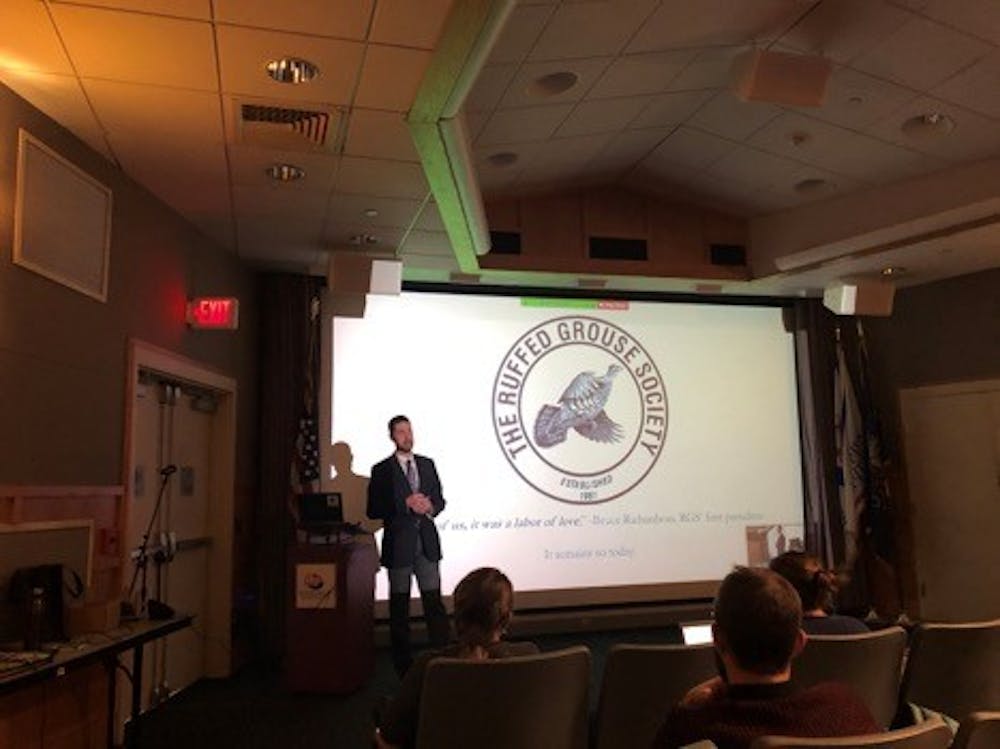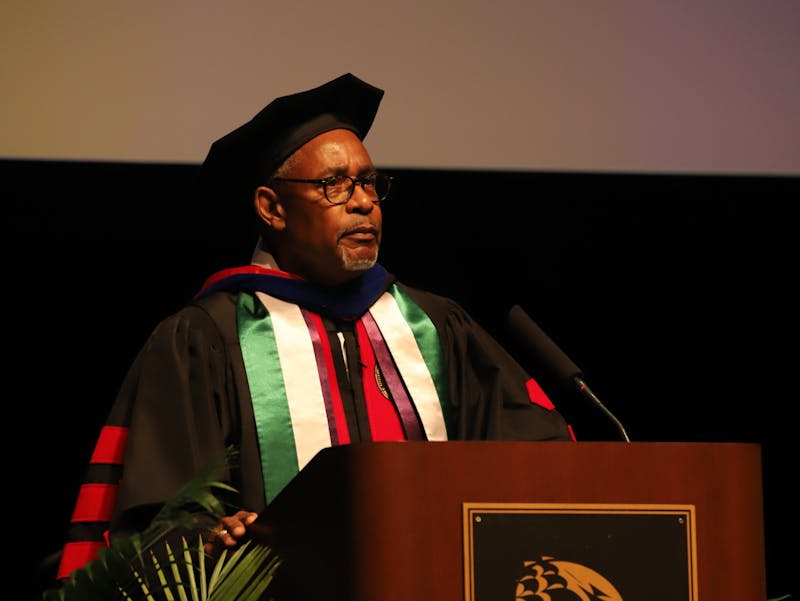The Center for Land Use and Sustainability (CLUS) held its second climate change open forum Nov. 13, at which students and the community learned about the effects of climate change on forestry and wildlife in the United States, specifically Pennsylvania.
Benjamin Jones, president and CEO of the Ruffed Grouse Society and American Woodstock Society, spoke on behalf of CLUS. He lead the conversation about sustainability and conservation research.
Jones shared his passion through projects that include habitat management and hunter recruitment.
“Climate change has been a big topic in the media. Many are experiencing the effects of it and we wanted to try to relate it to everyday lives,” Jones said.
Established in 1961, the Ruffed Grouse Society was formed to unite conservationists to improve forest health and wildlife habitats. Jones said the society’s main focus is not just on the ruffed grouse, a nonmigratory bird found in the Appalachian Mountains, but on other animals that depend on healthy forest habitats to survive.
According to the Audubon Climate Bird Map, the ruffed grouse population is projected to lose 34% of its breeding range by the year 2080 and has already become endangered in Indiana. This scientific evidence has shown the decrease in breeding directly correlates with climate change.
“Climate change is the biggest issue that will face us conservation-wise,” Jones said.
Cold climates and snow are important factors when it comes to the survival of the ruffed grouse and other endangered wildlife. The ruffed grouse typically dives into snowbanks overnight for warmth and protection from predators. With increased temperatures due to climate change, wildlife habitats will continue to be threatened, according to Jones.
“In a group like ours, we have to stay focused. We must make sure there is a push to conserve forests,” Jones said.
Forests balance about 12% of total emissions in the United States, but the annual carbon intake from forests has decreased about 5.6% since 1990 due to single aged forest. A single forest includes tree canopies that are the same height and lack species diversity. Trees are beginning to die and their ability to intake carbon decreases, Jones said.
“In order to solve a lot of problems going forward, conservation and sustainability will be the key when moving forward,” Jones said.
For more information about CLUS, visit its website at www.centerforlanduse.org. The CLUS is located in the geography and earth science department in Rowland Hall, rooms 201 and 203.



The Slate welcomes thoughtful discussion on all of our stories, but please keep comments civil and on-topic. Read our full guidelines here.